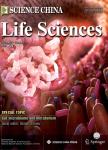Inhibition of the RXRA-PPARα-FABP4 signaling pathway alleviates vascular cellular aging by an SGLT2 inhibitor in an atherosclerotic mice model
作者机构:Department of Cardiology The Second Medical Centre Chinese PLA General Hospital National Clinical Research Center for Geriatric Diseases School of Medicine Nankai University Department of Cardiology Beijing Friendship Hospital Capital Medical University
出 版 物:《Science China Life Sciences》 (中国科学:生命科学(英文版))
年 卷 期:2024年
核心收录:
学科分类:1002[医学-临床医学] 100201[医学-内科学(含:心血管病、血液病、呼吸系病、消化系病、内分泌与代谢病、肾病、风湿病、传染病)] 10[医学]
基 金:supported by the National Key Research and Development Projects (2022YFC3602400) the National Natural Science Foundation of China (92249301, 82200496) Project of National Clinical Research Center for Geriatric Diseases (NCRCGPLAGH-2022001)
摘 要:Atherosclerosis is the pathological cause of atherosclerotic cardiovascular disease (ASCVD), which rapidly progresses during the cellular senescence. Sodium-glucose cotransporter 2 inhibitors (SGLT2is) reduce major cardiovascular events in patients with ASCVD and have potential antisenescence effects. Here, we investigate the effects of the SGLT2 inhibitor dapagliflozin on cellular senescence in atherosclerotic mice. Compared with ApoE-/-control mice treated with normal saline, those in the ApoE-/-dapagliflozin group, receiving intragastric dapagliflozin (0.1 mg kg-1d-1) for 14 weeks, exhibited the reduction in the total aortic plaque area (48.8%±6.6%vs. 74.6%±8.0%,P0.05), the decrease in the lipid core area ((0.019±0.0037) mm2vs.(0.032±0.0062) mm2, P0.05) and in the percentage of senescent cells within the plaques (16.4%±3.7%vs. 30.7%±2.0%, P0.01), while the increase in the thickness of the fibrous cap ((21.6±2.1)μm vs.(14.6±1.5)μm, P0.01). Transcriptome sequencing of the aortic arch in the mice revealed the involvement of the PPARα and the fatty acid metabolic signaling pathways in dapagliflozin’s mechanism of ameliorating cellular aging and plaque progression. In vitro, dapagliflozin inhibited the expression of PPARα and its downstream signal FABP4, by which the accumulation of senescent cells in human aortic smooth muscle cells (HASMCs) was reduced under high-fat conditions. This effect was accompanied by a reduction in the intracellular lipid content and alleviation of oxidative stress. However, these beneficial effects of dapagliflozin could be reversed by the PPARα *** analysis and molecular docking simulations revealed that dapagliflozin might exert its effects by directly interacting with the RXRA protein, thereby influencing the expression of the PPARα signaling pathway. In conclusion, the cellular senescence of aortic smooth muscle cells is potentially altered by dapagliflozin through the suppression of the RXRA-PPARα-FABP4 s



